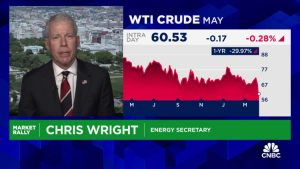The Federal Reserve on Wednesday raised its benchmark interest rate to a range of 5.25% to 5.5%, the highest level in 22 years, in order to combat “elevated” inflation.
With financial markets and economists widely expecting that rate move, the focus was on Fed Chair Jerome Powell’s one-hour session with reporters, which followed.
Here are the four key takeaways from Powell’s presser:
Fed staff is no longer forecasting a recession
During the press conference, Powell made news by saying the Fed staff is now forecasting a “noticeable slowdown” rather than a recession. The reason for the shift, Powell said, is that the staff has seen the recent resiliency in the economic data.
Powell said he also thinks the Fed can bring inflation down “without the kind of really significant downturn.”
Ordinarily, we would have had to wait until Aug. 16, when the Fed releases a summary of its two-day meeting, to get a read on the staff’s economic forecast.
“They’re putting a soft landing back on the table,” said Gus Faucher, chief economist of PNC Financial Services Group.
Banks are not aggressively tightening lending standards
Ever since Silicon Valley Bank collapsed in March, economists have been worried that other banks would pull back on lending and raise loan standards. So far, there has been a steady reduction in lending but no dramatic moves. The Fed keeps an eye on loan standards in quarterly surveys with bank officers.
The latest report is due next week, but Powell gave us a sneak preview, saying that lending conditions are tighter but not in an alarming manner. “I would just say it is broadly consistent with what you’d expect. You’ve got lending conditions tight and getting a little tighter,” he said.
Powell conceded that credit conditions were a headwind facing the U.S. economy.
Subadra Rajappa, head of U.S. rates strategy at Société Générale, said her team thinks the Fed will not raise target lending rates further, citing tighter loan starts and credit standards as indicators that the central bank is done.
Why did Powell refuse to bite about ‘one final hike’ in September?
In June, the Fed forecast two more 25-basis-point rate hikes this year.
With one taken care of Wednesday, Powell was offered the opportunity to hint that the Fed was leaning toward a final rate hike in September. But he “steadfastly refused to bite,” said Paul Ashworth, chief North America economist at Capital Economics.
Powell also pushed back on the idea that the Fed is now on an every-other-meeting schedule, which would imply a skip in September and a final hike at the start of November.
Vince Reinhart, a former top Fed staffer and now chief economist at Dreyfus and Mellon, said he thinks of Powell as a chair “behind his committee.” While Powell wants to skip a hike in September, there are too many members of the Fed who are uncomfortable with such a signal, so Powell couldn’t say it, he said.
“Powell is comfortable putting a policy-rate move off to November. Some people are less comfortable,” Reinhart said.
On the other hand, Omair Sharif, the president of Inflation Insights, said it might have been hawkish of Powell to never mention “one more hike” at all.
Sharif said this raised the possibility that there might be more than one hike coming before the Fed says it is done.
After the meeting, traders in derivatives markets saw only a 40% chance of a rate hike by November.
Powell suggests bar for another hike is high
Powell did show his dovish colors a bit when he said the central bankers have “covered a lot of ground, and the full effects of our tightening have yet to be felt.”
Fed officials who are pressing for more rate hikes have said they do not expect many more “effects” to be seen in the economy from previous hikes.
“To the extent that the Fed views policy lags as relatively long, it suggests that they are going to be very careful in trying to avoid overtightening from here,” said Thomas Simons, an economist at Jefferies.
This post was originally published on Market Watch



